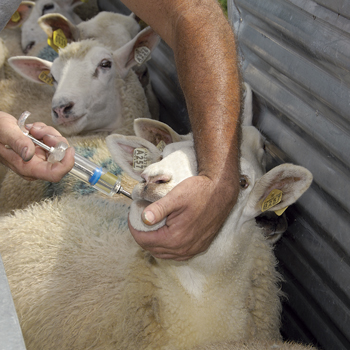There are two main styles of chutes used for handling sheep—the treatment chute and the sorting chute. Handling setups for larger flocks (500+) often have both types of chutes. Smaller flocks do their treatment within the sorting chute.
Treatment chutes are usually 36″ wide. The width allows for rapid filling of the chute and for more sheep to be in the chute and treated at one time. Shepherds work inside the chute from back to front. This puts pressure on the animals causing them to move forward in the chute. The shepherd then catches, treats and releases the treated animal behind them.
Sorting chutes are only wide enough (22″ plus or minus) for a single adult sheep. To treat, the shepherd walks alongside the chute and treats adult sheep by reaching over the panel. For lambs, shepherd preferences differ. Some like to work inside the chute with the lambs. Others reach over the side.
To use a sort chute for both treatment and sorting:
- Approach the sheep from the front at the front of the chute. This pushes the sheep back in the chute, reducing their mobility and chance of injury to shepherd and animal. (Working the sheep from the back and not the front puts the shepherd in the animals blind spot and flight zone. Appearing suddenly from behind may startle the animal.)
- With your free hand, reach over the animals head and cup their jaw. Keep the jaw and mouth level with the ground. Do not tip the animals head back because this may cause the drench to go into the incorrect stomach and therefore not be absorbed properly. Improper absorption often results in a sub-therapeutic dose and, in turn, decreases the effectiveness of the drench in future uses.
- Insert the drench nozzle into back of mouth (near base of tongue) and inject wormer.
For maximum effectiveness withhold feed for 24 hours prior to de-worming. This allows the stomach to empty and the drench to be more effective against the parasites.



